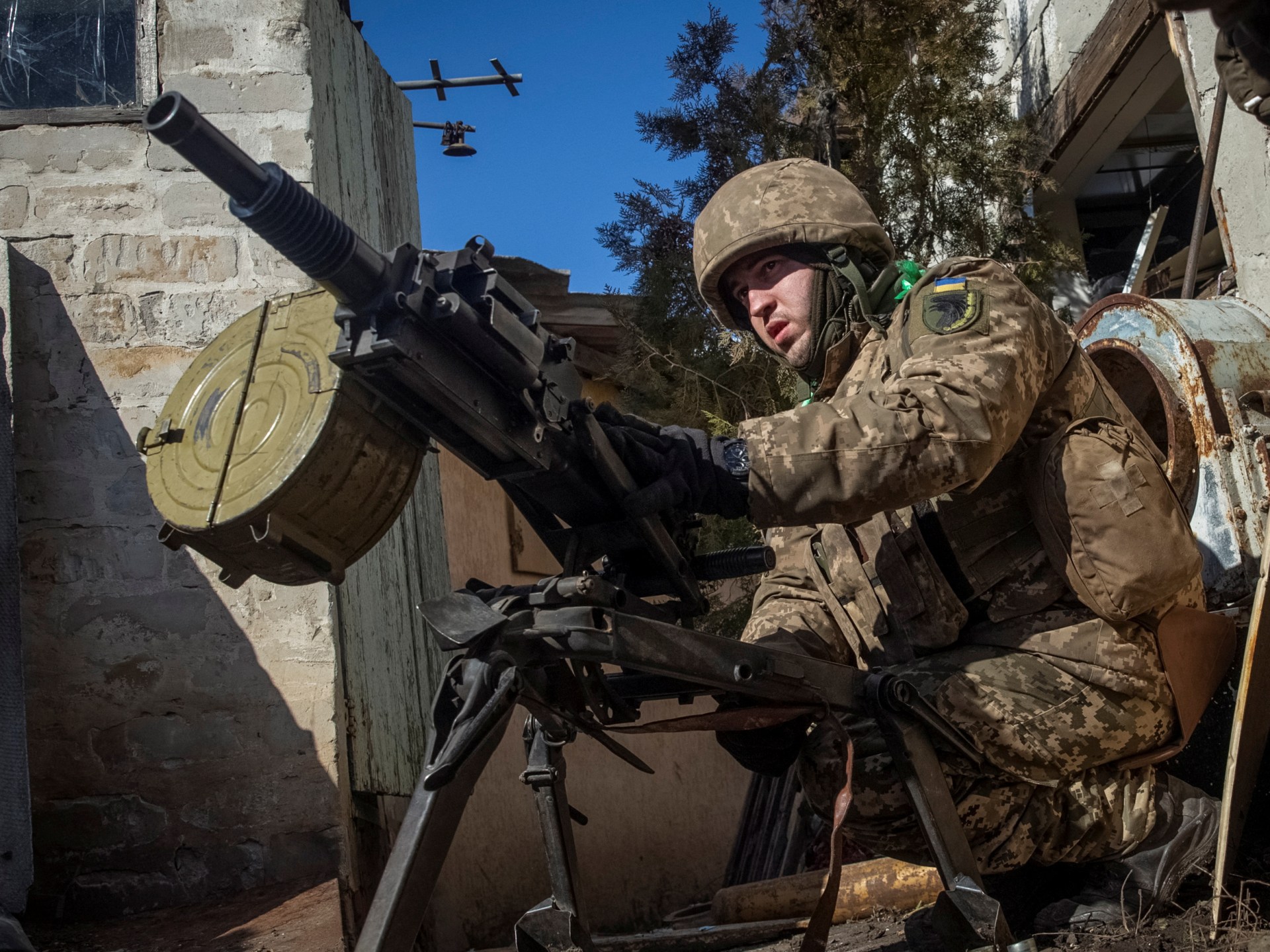This question was asked by Ukrainian President Volodymyr Zelensky in December of last year during a short visit to Bakhmut in eastern Ukraine, a war-ravaged and depopulated city that has become a center of battles between Russian and Ukrainian forces.
The battle of Bakhmut is considered one of the longest and bloodiest battles in the Russian-Ukrainian conflict, which entered its second year.
Reports indicate that hundreds of soldiers from both the Ukrainian and Russian sides are dying daily in and around the city since the fighting intensified in August last year.
In recent weeks, Russian forces have advanced in the north and south of the city, cutting off 3 of the four supply routes for the Ukrainian forces, leaving only one outlet, which is the road leading to the west towards Chasev Yar.
Official Ukrainian reports indicate the size of the massive Russian attack on the city, in which air strikes, artillery and mortar fire were used, and dozens of daily attacks by the Russian ground forces.
The Ukrainian General Staff stated on Monday that Russia "continues its attempt to attack Bakhmut and the surrounding towns," as it bombed more than 12 locations, while Ukrainian forces repelled about 100 attacks last Sunday alone.
Bakhmut, which had a population of about 70,000 people before the war, is part of a larger cluster of cities and towns that includes the town of Solidar, which is located in the northeast of Bakhmut, which Russia took control of two months ago after fierce battles in which tens of thousands of Wagner fighters participated.
Bakhmut is the key
A report by Al Jazeera English website quoted Alexei Koch, a political analyst residing in Kiev, as saying that the fighting in Donbass is now proceeding according to blocs and axes, indicating that the Bakhmut-Solidar axis is the main key to controlling other cities and towns of Donbass of strategic importance and heavily fortified, including Chasev Yar and Kramatorsk. and Sloviansk.
The report indicated that the Russians are trying to seize two towns, Krimina, which is located 75 kilometers from Bakhmut to the north, and Volidar, which is located 150 kilometers to the south.
In a statement he made to Al-Jazeera, General Ihor Romanenko, former deputy chief of the General Staff of the Armed Forces of Ukraine, indicated that the Ukrainian forces will have to hold out for a few more weeks waiting for advanced Western weapons, including advanced Leopard tanks designed to fight and destroy armored vehicles from the Soviet era, and Russian forces. Additional Ukrainian trained to use these weapons.
Romanenko said, "After we stop their advance and form our strategic reserves - taking into account these weapons and trained military units - we can talk about launching a counterattack."
What does Russian control of Bakhmut mean?
Despite the importance of Bakhmut, experts believe that the withdrawal of Ukrainian forces from the besieged city will not be catastrophic for Kiev.
Nikolai Mitrokhin, a historian at the German University of Bremen, believes that Bakhmut is important because it is a second line of defense for the Ukrainian forces in the Donbass, but its importance declined to a large extent after the loss of Solidar and the surrounding towns, and it became besieged from 3 sides and a half of the fourth side, so its loss will not constitute A big difference in the course of the war.
Despite the foregoing, Mitrokhin believes that the fall of Bakhmut in the grip of the Russian forces would overcome the obstacles in the path of those forces to attack the third line of defense of the Ukrainian forces, which is the Toritsk axis, which extends about 100 kilometers west of Bakhmut.
Mitrokhin predicted that the Russian forces would only be able to besiege Chasev Yar during the next two weeks, due to the resistance of the Ukrainian forces and the spring weather, which makes the soil wet, which often means bumpy roads.
He also expected that Russian forces would not be able to reach the suburbs of Konstantinovka and Kramatorsk, two strategic towns located 27 kilometers and 55 kilometers, respectively, west of Bakhmut, before mid-May.
"It will take a year or more to storm the third line of defense" along the borders of the Donetsk and Luhansk region, which includes hundreds of heavily fortified posts and a maze of trenches and bunkers, he said.
In the same context, US officials underestimate the strategic importance of the city of Bakhmut with the advance of the Russian forces.
In the most recent statements, US Secretary of Defense Lloyd Austin said - during his visit to the Jordanian capital, Amman - that Bakhmut's value is symbolic rather than strategic or operational.
Austin added that if Bakhmut fell, this does not mean that Russia made a fundamental change in the course of the war, as he put it.

